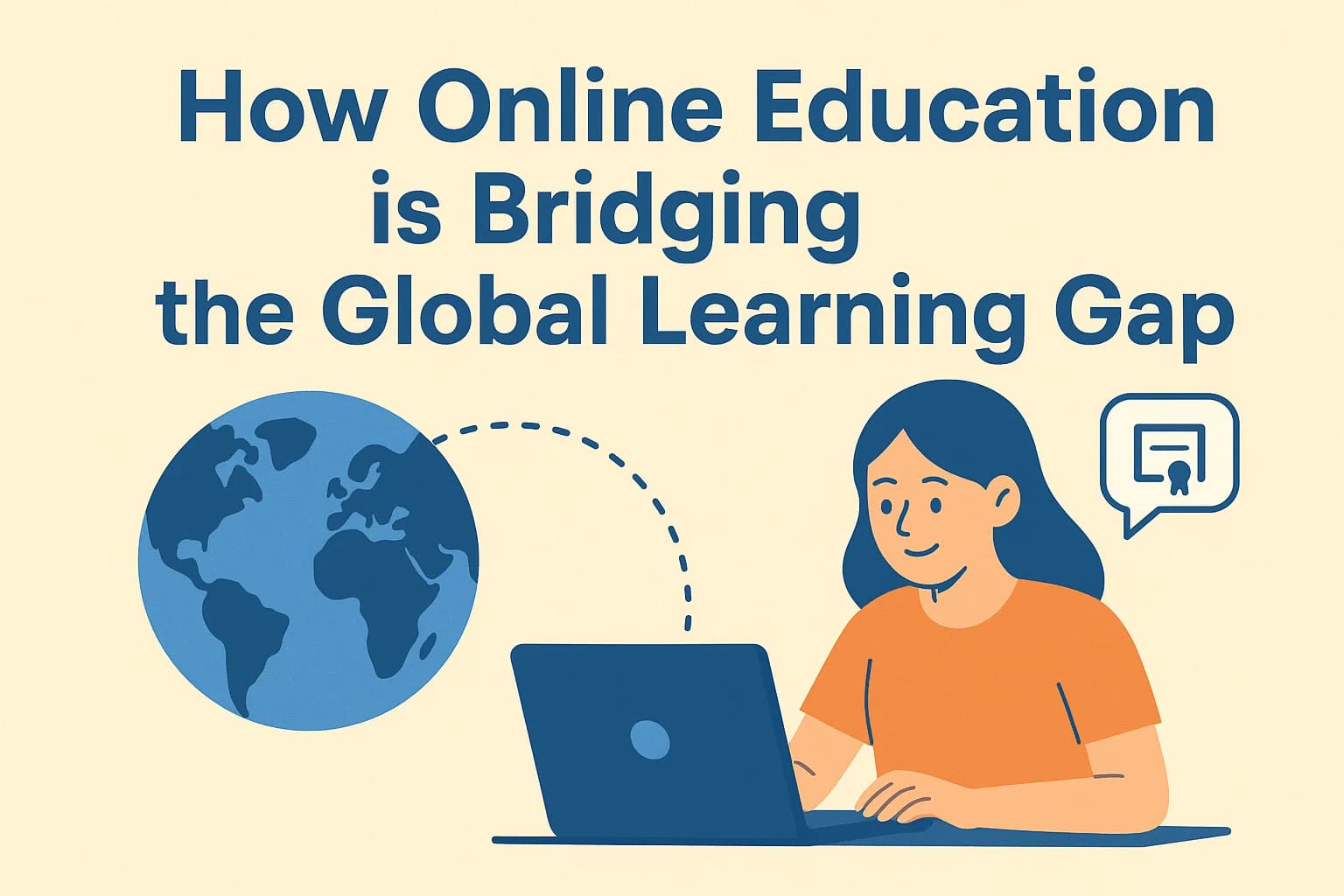Introduction
To Empower digital learning platforms, distance education and e-learning opportunities, millions across the globe find online education as a great and effective source. It’s a great transformation over time which provides a lot of opportunities to gain knowledge and skills staying anywhere and at any time. This remarkable change ensures to bridge the global learning gap and offers unlimited access to quality education.
The Rise of Online Education and Global Access
The Evolution of Digital Learning
Digital Education is the most preferred medium when someone is aiming for a beginner level course or Expert ones. To promote digital learning, e-learning systems are massively supported by technology. For students and professionals, there are different learning access points like virtual class rooms, MOOCs(Massive Open Online Courses) etc.
To support and provide distance education, e-learning platforms for learners, there is no need to set up any big physical infrastructures. With limited infrastructures, some biggies like Udemy, Coursera, edX, Upgrad and Khan Academy offer top quality content by promoting global education.
How Online Education Promotes Equity and Accessibility
Breaking Barriers through Digital Connectivity
One of the important aspects of online learning is to provide a single interface regardless of your current location. Learners from underprivileged areas to rural areas and urban areas find the same quality education through remote learning.
To accomplish equity in education through digital connectivity, technology has enhanced affordable internet and devices.
Affordable and Flexible Learning Opportunities
Where the offline education system includes high tuition fees, travel expenses and sometimes accommodation costs, e-learning lowers financial costs by offering self-paced schedules, saves a lot of time for working professionals and learners.
These methods increase high participants and encourage upskill and reskill their skillsets to boost the future growth.
The Role of Technology in Bridging the Global Learning Gap
Technology as an Enabler of Digital Learning
With rapidly evolving education technology tools like AI-powered platforms, learning software and virtual classrooms primarily focus to boost the content for a better student engagement. With these distance learning platforms, students and working professionals choose personalized subjects, efficient content.
Most importantly, digital learning in different languages bridges communication gaps among teachers and students across countries.
Building Skills for the Future
As the globe is gearing towards a skill-focused environment, e-learning platforms prioritizes online education to boost critical thinking and digital literacy. Digital education platforms are one step ahead to reshape the career and meet the demands of skillsets through the modern workforce.
To ensure practical skills and soft skills are relevant in today’s world and not to be learned for degrees, some online platforms offer good courses like data science, cyber security and artificial intelligence, and soft skills enhancement programs.
Challenges in Bridging the Global Learning Gap
Addressing the Digital Divide
Despite technology evolving, online education has some drawbacks like some learners have good internet reach and some haven’t. Due to limited bandwidth, digital devices and insufficient teacher training make a digital divide between learners and teachers.
Governments and organisations should implement continuous efforts to make sure all learners should get benefits of online education.
Ensuring Quality in E-Learning
With the increased number of courses on digital platforms, it’s difficult to find the right resources. Some certified institutions and standardised curriculum are mainly the go to options for digital education when credibility and effectiveness are concerned.
Some institutions are following best practices to boost the credibility of e-learning platforms by peer reviews, providing certifications and upholding interactive assessments.
How Online Education Fosters Global Collaboration
Connecting Learners Worldwide
Online education regulated by various biggies like Udemy, Coursera is a single point of engagement for various learners across the globe to collaborate on projects, share thoughts and ideas. This helps international learners to work in diversified environments.
Empowering Teachers and Institutions
Not only learners benefit from digital education, but also teachers, educators and trainers take advantages, earn recognition internationally. Educators are able to reach a massive audience by creating and sharing quality content worldwide.
The Future of Online Education
Toward a more Inclusive Future
With AI-powered mechanisms, adaptive software implementation, rise of multilingual platforms, affordable courses, e-learning manages to decrease the global learning gap.
With advancement of technology, digital education is accessible to everyone regardless of location, gender and society.
FAQs
Q1. What is digital education?
Ans. Online education is a mode of learning for students and working professionals to deliver educational content across the globe. It needs some adaptability of digital devices and network connectivity allowing time management and flexibility.
Q2. How does online education bridge the global learning gap?
Ans. It provides the same access and opportunities for all learners regardless of location, gender, costs by breaking all burdens.
Q3. What are the main benefits of online learning?
Ans. It offers self-paced courses thus boosting time management, affordable price for the diversified curriculum and global accessibility for all types of learners.
Q4. What challenges does online education face globally?
Ans. Some major drawbacks are like network reach, limited connectivity, digital divide in underprivileged and rural areas.
Q5. Is online education the future of learning?
Ans. Of course. With evolving technology, AI-driven platforms and adaptive software implemented, global outreach, online education is now a most preferred mode of learning by reshaping your future.

